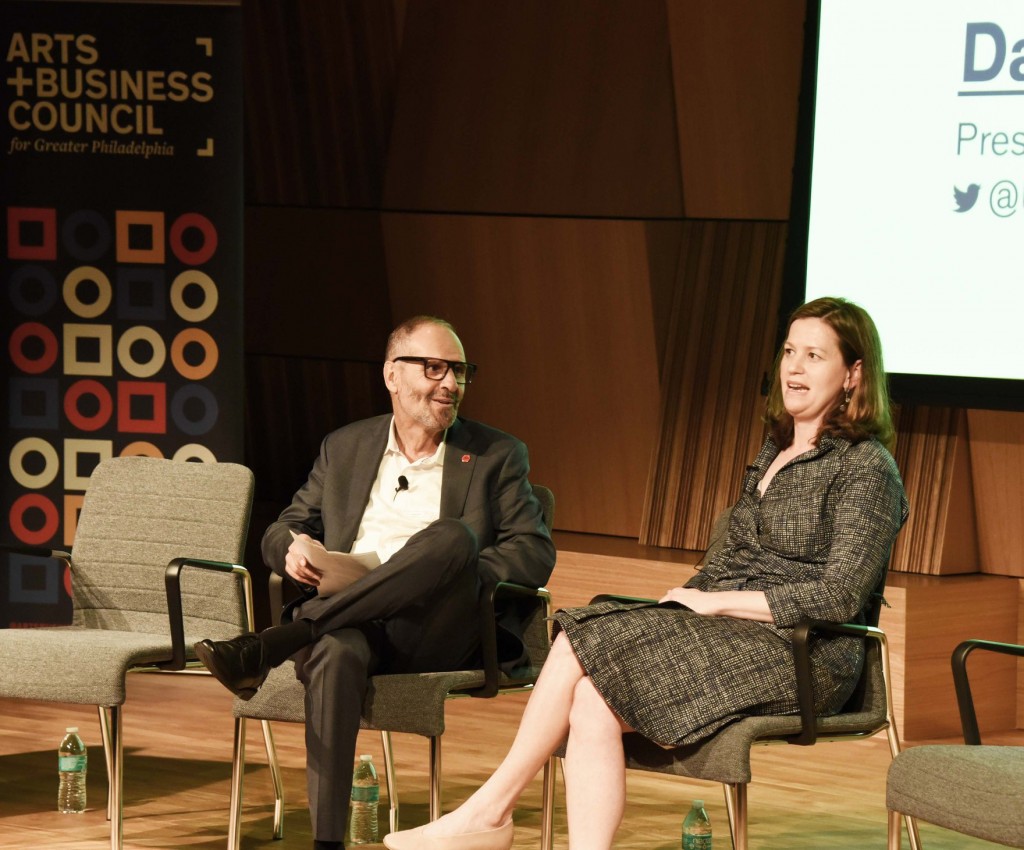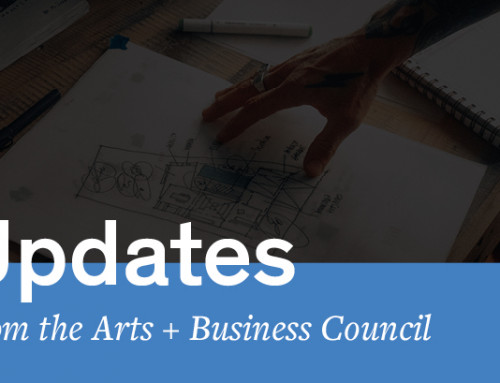On Thursday, May 2, 2019, the Arts + Business Council, a Council of the Chamber of Commerce for Greater Philadelphia, hosted author and New York University professor Amy Whitaker at the Pennsylvania Academy of the Fine Arts‘ Rhoden Arts Center for our Defining Innovation speaker series. Often referred to as a “business poet,” Whitaker has made integrating the creative and practical her life’s work. She teaches business to artists, art to businesspeople, and recognizes the interdependent and symbiotic nature of both vantage points to generating innovation.
The program began with a performance by BalletX, a premier contemporary ballet company founded in 2005 and based in Philadelphia, Pennsylvania. Following the performance, BalletX Co-Founder Christine Cox took to the stage to share a brief history of dance and its place in the art history of Philadelphia. Our Executive Director, Markita Morris-Louis, Esq., thanked Cox for her work and dedication to the city and stood at the podium to introduce Whitaker and commence the program. Morris-Louis closed her remarks with this: “At the Arts + Business Council, we want the power of these programs and the connections you make to follow you beyond this program. Build meaningful connections, grow your opportunities. That’s what you’re here to do today. Take full advantage of it.”

Whitaker then took to the podium to begin her keynote presentation on art thinking and its influence on everything from the economy to technology. Throughout her presentation, Whitaker discussed the ways art thinking manifests in ways as simple as the creative strategies that many people implement at work everyday and in ways as technical and advanced as the invention of the crypto-currency Blockchain. Whitaker defined the concept of art thinking as simply “leading with questions,” or asking questions that stimulate new ideas. During the brief artistic history she shared about Blockchain, she mentioned that the company started in a Morristown, New Jersey, Friendly’s restaurant when the founders began exchanging questions about privacy and centralized authority.
Whitaker then went on to discuss how art thinking connects to the process of risk-taking. She encouraged attendees to ask risky questions, to embrace thoughts of potential failure, and to not feel isolated by what is deemed possible. In environments where innovation is stifled, Whitaker suggested that people become “disenfranchised from their creative selves” and meeting goals becomes more about getting to Point B rather than thinking creatively about the progressions made along the way. She encouraged attendees to continue asking important questions: “Curiosity is the bridge to creativity.” Whitaker delves even more into concepts like these in her book Art Thinking: How to Carve Out Creative Space in a World of Schedules, Budgets, and Bosses. Read the reviews.
After her keynote, Whitaker was joined on stage by David Yager, President, University of the Arts, a university for visual and performing arts based in Philadelphia, Pennsylvania. Whitaker and Yager discussed the role of the arts in a corporate environment, a topic especially pertinent to Yager and the University of the Arts, which just launched a new Doctoral program in Creativity. “Building connective tissue in the body of knowledge, connecting dots across many fields … observing the world with curiosity. This is an opportunity for engagement,” Whitaker said of the value in the program, expanding on the idea that the arts are substantive to business and innovation. “The space between art and business is a civic space.”

The program concluded with a Strategy Salon featuring Whitaker in addition to Adam Karasick, General Manager, EisnerAmper; Natalie Nixon, President, Figure 8 Thinking, LLC; Kay Sargent, Senior Principal & Director of Workplace, HOK Network; and discussion moderator Ingrid Welch, Member, Cozen O’Connor. The Salon expanded on themes Whitaker introduced earlier in the program: creativity, innovation, and art thinking. Sargent opened the discussion by calling on the audience to think back to their childhood reminding them that at one time they were all probably curious and creative kindergartners. By sixth grade, however, Sargent explained that many students no longer channel their creativity through inquiry and that, by adulthood, many ask very few questions.
How does that impact the many adults working in corporate settings? It results in less innovation, according to Nixon. Nixon added that curiosity is crucial to success in adulthood, especially in the workplace: “Creativity is an engine for innovation ... Businesses that utilize inquiry, improvisation, and intuition can innovate more effectively.” Karasick contributed some of the methods EisnerAmper uses to stimulate curiosity in its employees; that is, many of his colleagues are enrolled in continuing education courses that encourage curiosity and an ability to apply a skill set in multiple settings.

In closing, Whitaker reiterated the basis of art-thinking: asking questions and letting the process of asking questions lead to innovative ideas. She encouraged attendees to ask themselves what knowledge they hope to glean from the situations they find themselves in and what insights they hope to gain from their experiences. In their final words, each member of the Salon stressed the importance of creativity in shaping how we interact with and appreciate others, how we strategize and innovate in the workplace, and how we continue to drive innovation in the world around us.













Leave A Comment